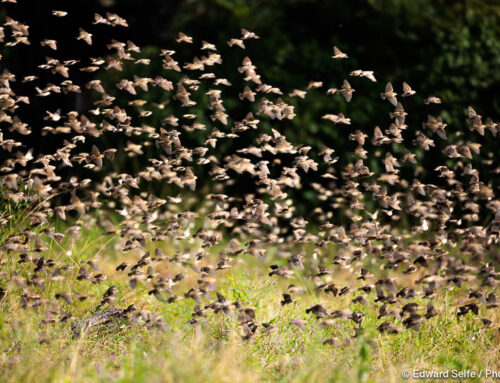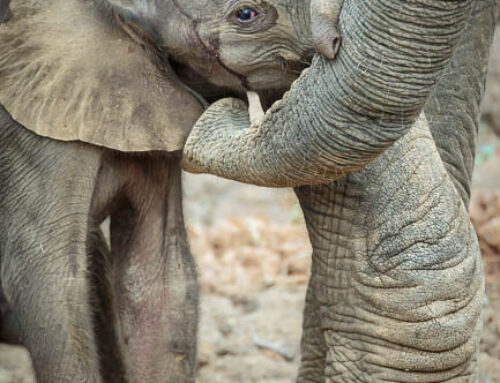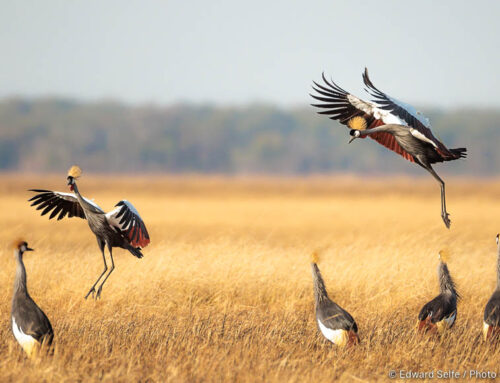In September 2018, we started to see crowned eagles around the entrance to the national park on a regular basis. Sightings had always been recorded in SLNP but occasional at best. To some extent, large eagles such as this are always a rarity as they are the very top of the food chain, feeding on large primate prey and reaching a massive height of nearly 100cm from bill to tail tip. So the ecosystem does not support very many!
Therefore regular sightings suggested repeat sightings of the same birds which was very exciting and, indeed, we soon found them starting to collect twigs and build a nest in the top of a tall ebony tree. This tree is right above the road so we were concerned that they would be disturbed, but in February 2019 there was incubation and then a chick 6 weeks later.
We watched, from a respectful distance as crowned eagles are known to attack perceived threats to their nest (including researchers who climb up to investigate), as they reared a single chick during the dry season. It followed the recorded timings from previous research of 50 days’ incubation, then chick’s first flights at about 3 months. After August, I stopped seeing them any more suggesting that they had moved off from the nest site, but the adults will likely continue to support the chick until 9-11 months old.
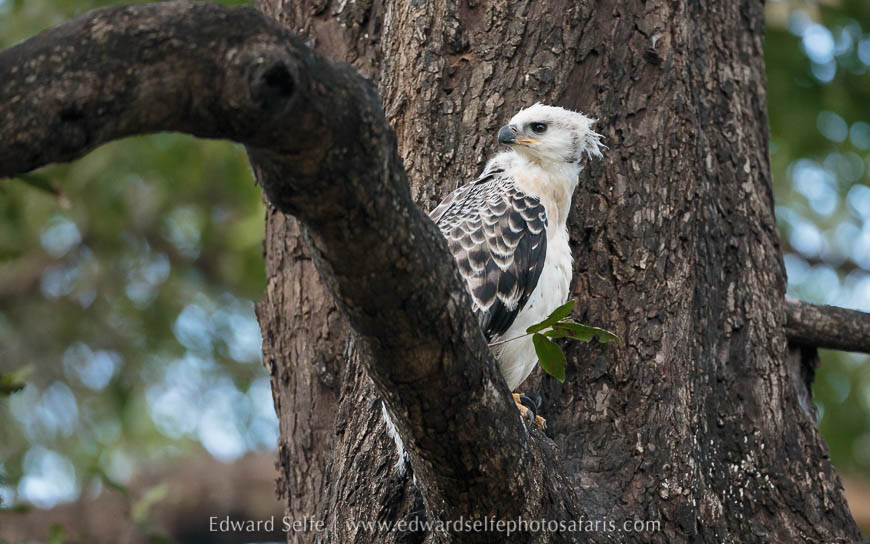
During April 2020, I saw two adult crowned eagles near my house (about 1km from the original nesting site). I wondered where they had been in the intervening time but didn’t think too much about it except that it was approaching two years since we had seen them nesting, so there was a chance that they were considering nesting again. On a recent trip to the previous nesting area — in search of other things — we spotted both birds alongside the old nest (which was still intact) and observed some very interesting behaviour.
While I was taking photos of the pair (zoomed out to include the nest alongside them) the smaller male bird appeared to provoke the female who was sitting nearer the nest. He reached out and pecked at her chest and then lashed out with a leg armed with fearsome talons.
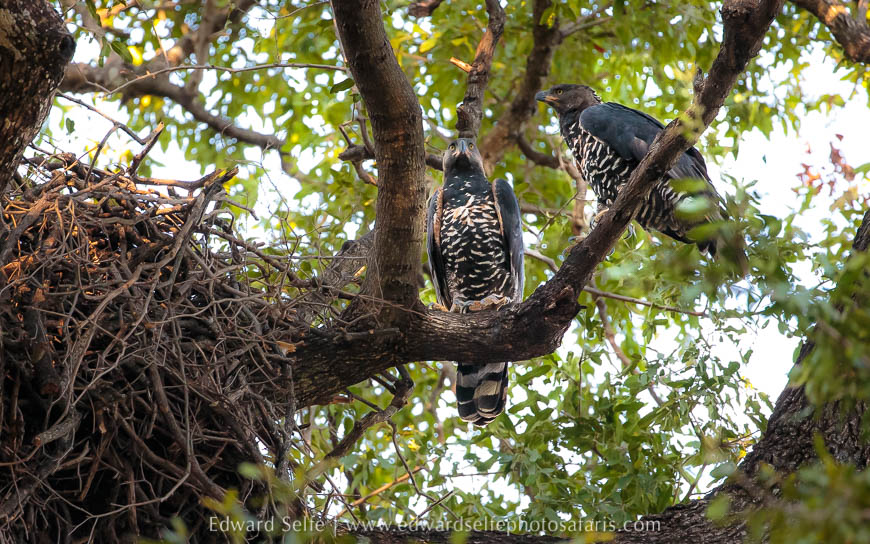
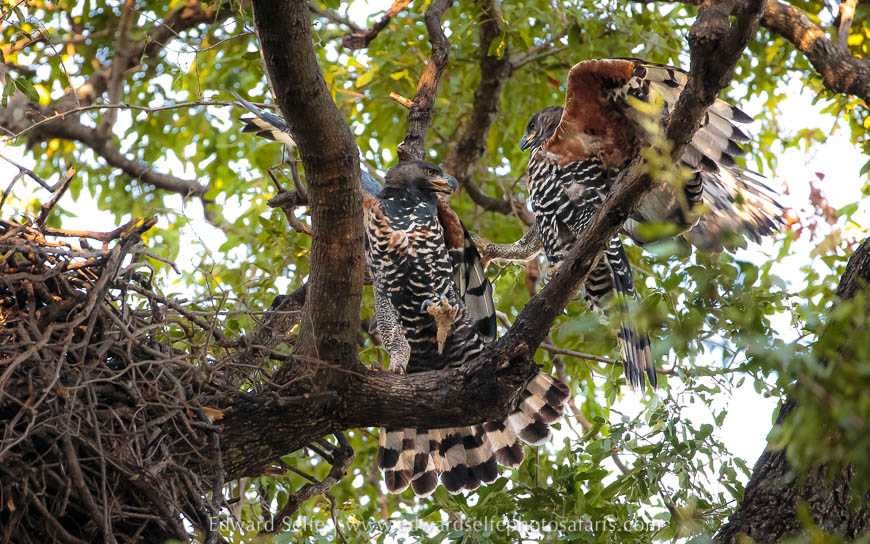
The bird defending the nest or chick is well known to attack the returning partner even when they bring food, and we saw this in action! The female’s response was rapid and dramatic; she opened her wings, displaying her full size, retaliated with a stretched leg and then flew up to a slightly higher branch and continued to bear down on the male below. It lasted just a few seconds, and the angle of view meant that the action is somewhat obscured, but a short study of the images tells the story!
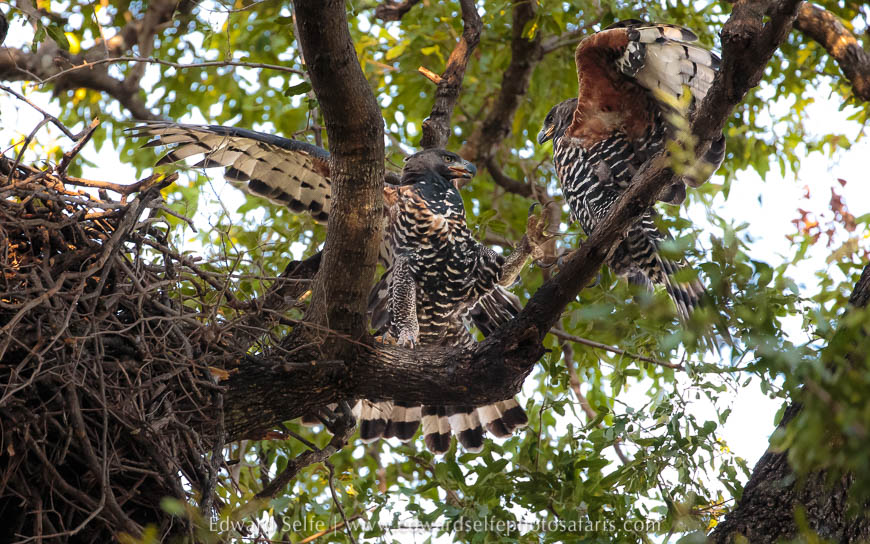
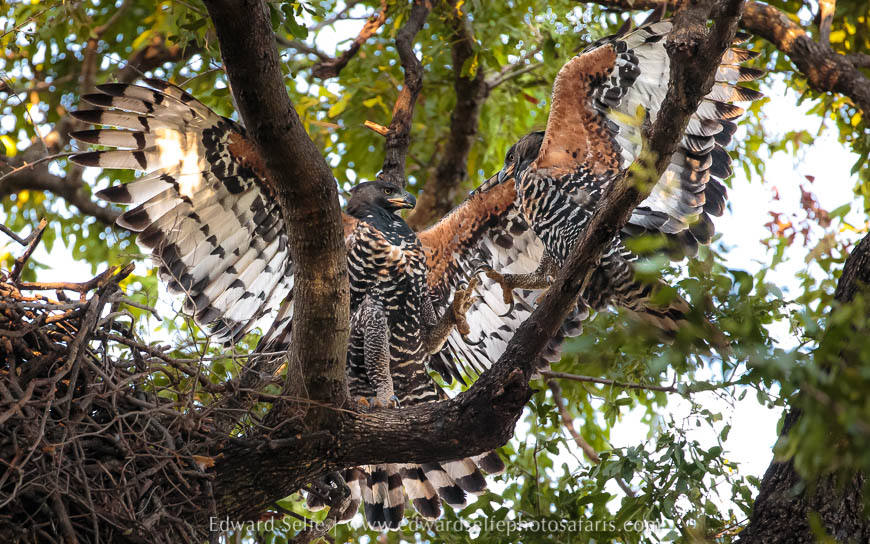
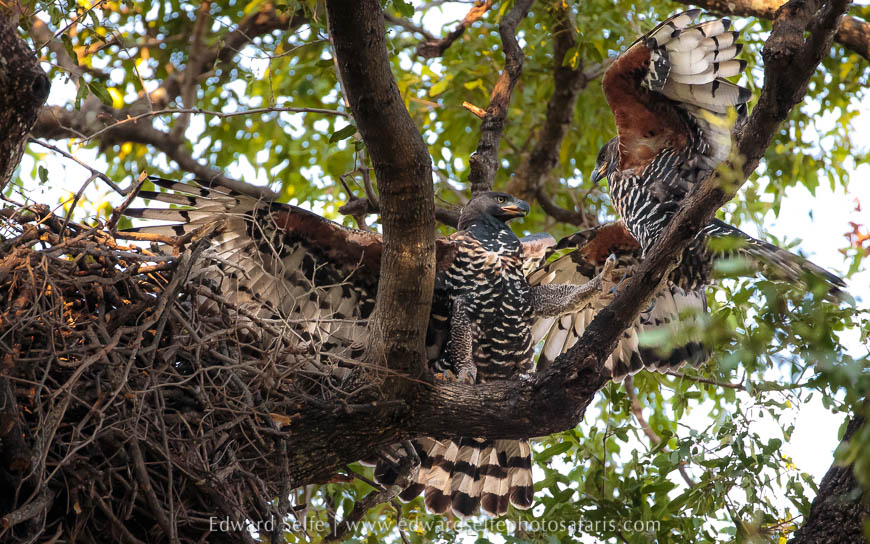
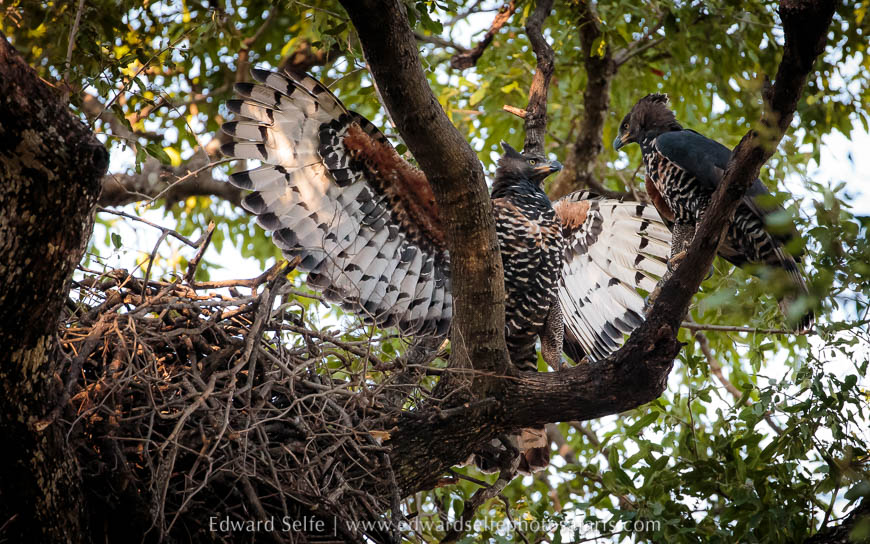
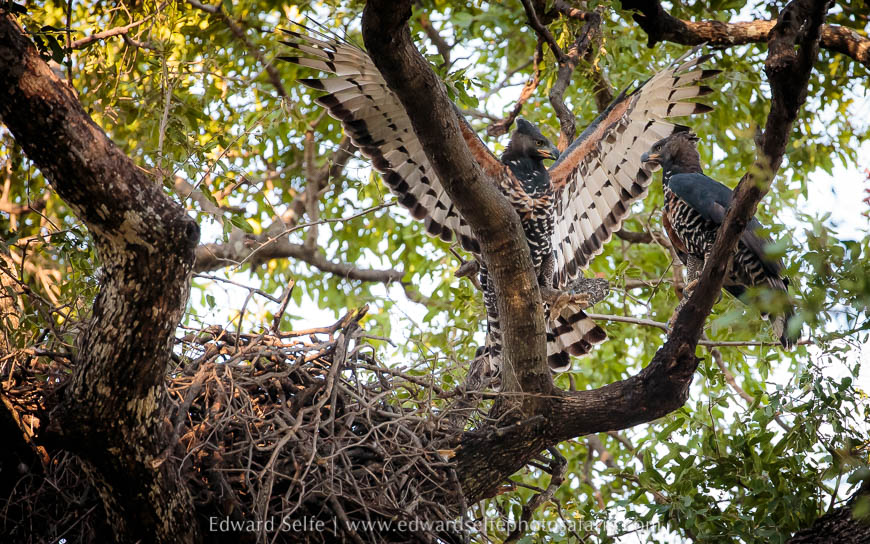
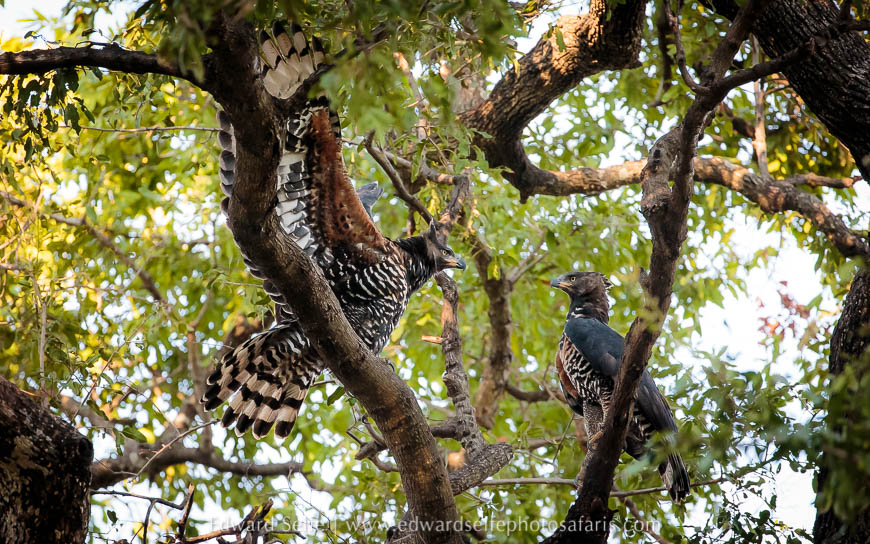
We hope that another nesting season may begin now, with the chance of watching the whole process through the dry season. However, when we returned a couple of days later, there was no sign of them. We’ll keep checking.

